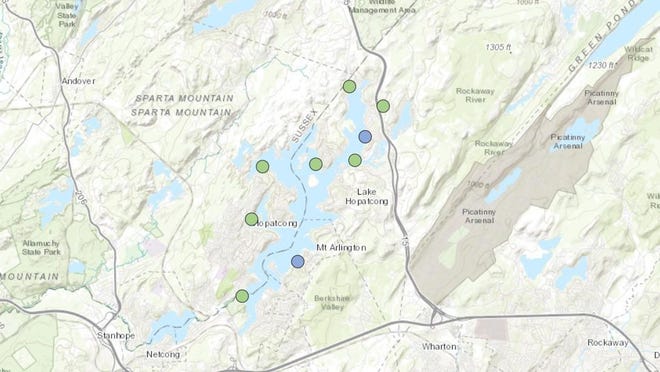Is the Search Continuing on Lake Hopatcong Today

A year after Lake Hopatcong was shut down by one of the largest algal bloom outbreaks in state history, the harmful bacteria has resurfaced.
Samplings taken by the state Department of Environment Protection, or DEP, and confirmed Monday show elevated levels of the blue-green algae in two spots across New Jersey's largest freshwater lake.
"We are holding our breath," said Marty Kane, chairman of the Lake Hopatcong Foundation. "We are hearing [about harmful algal blooms] all over the place and with the hot, sunny weather, it's great for them to bloom."
The elevated levels triggered a blue "watch" advisory at the beach area of Lake Forest Yacht Club, in the Jefferson portion of the lake, and another at Mt. Arlington Beach. While the club's beach is members-only, the Mt. Arlington section is a public area that has been "hammered" with visitors due to nearby Hopatcong State Park's capacity limits, Mt. Arlington Mayor Michael Stanzilis said in a Facebook video posted Thursday.
Stanzilis said that due to the influx of crowds, access to the popular beach would initially be limited to borough residents only. He did not immediately respond to a request for comment regarding the algal blooms.
Beaches are not required to close under a "watch" advisory.
Samples taken at the two areas show heightened levels of the same cyanobacteria found at Swartswood Lake last week and in the New Jersey portion of Greenwood Lake, where high levels of algae were reported at Browns Point.
To be considered safe, a water sample must contain less than 20,000 cyanobacteria cells per milliliter, the New Jersey DEP says.
A sample from Mt. Arlington contained 26,000 cyanobacteria cells per milliliter while a sample taken from the Lake Forest beach contained 26,375 — both within the DEP's guidelines for a "watch" notice.
While cell counts of 80,000 per milliliter or more are required to shut down a beach for swimming, a "watch" advisory still indicates the potential for residents to experience allergic reactions or other health issues from the water.
The state warns residents not to drink water or eat fish caught in the lake under a watch. Canoeists, kayakers and even jet skiiers are urged to take caution and pets and livestock should be kept away from the water, according to the DEP.
A skin rash, the mildest symptom, can occur from direct contact with the bacteria. If ingested, the toxins they produce can cause abdominal pain, headache and sore throats, among other symptoms.
Algae tends to bloom in the summer months when water temperatures are warmer than usual. The blooms absorb sunlight, which makes water warmer and promotes more outbreaks, according to the U.S. Environmental Protection Agency.
Six additional spots tested along Lake Hopatcong did not have any harmful algal blooms present, including Byram Cove and Crescent Cove, two popular boating spots.
Kane said as "everyone keeps an eye" on the lake, several projects have taken place in recent months to help mitigate the algal blooms. Aaeration systems, rain gardens and other improvements are being put in place thanks to an $833,000 grant — a combined $500,000 from the state's DEP and the remainder from local agencies.
Kane said the switch was turned on Friday for an aeration system installed in Crescent Cove — one of the hardest hit spots in 2019. Aeration allows oxygen to circulate in the water, allowing plants and animals to thrive and removing the "food" necessary to help algal blooms survive.
Kane said the area is "already seeing good results."
Other efforts, such as phosphorus-controlling technologies and stormwater infrastructure upgrades, will be more of a long-term solution, Kane said. Some residents are even looking at personal rain gardens to absorb chemical runoff that would fuel algal blooms in the lake.
"Even if they are successful ... it doesn't immediately eliminate the blooms," Kane said. "It's a process that takes time."
Algal blooms may be the new reality — until those projects start making a bigger difference, he said.
"This is a new reality across the nation with climatic conditions changing just enough for everyone to see things we didn't use to see," Kane said.
Lori Comstock can also be reached on Twitter: @LoriComstockNJH, on Facebook: www.Facebook.com/LoriComstockNJH or by phone: 973-383-1194.

Source: https://www.njherald.com/story/news/2020/07/27/it-was-inevitable-harmful-algae-confirmed-on-lake-hopatcong/113404620/
0 Response to "Is the Search Continuing on Lake Hopatcong Today"
Post a Comment